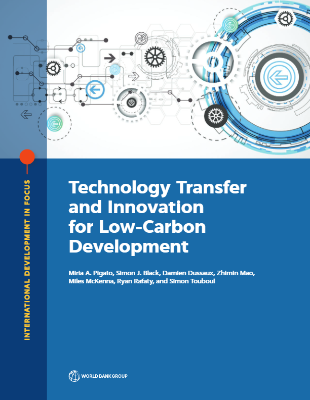Introduction
Experts highlight advances with the potential to revolutionize industry, healthcare and society
If some of the many thousands of human volunteers needed to test coronavirus vaccines could have been replaced by digital replicas – one of this year’s Top 10 Emerging Technologies – COVID-19 vaccines might have been developed even faster, saving untold lives. Soon virtual clinical trials could be a reality for testing new vaccines and therapies. Other technologies on the list could reduce greenhouse gas (GHG) emissions by electrifying air travel and enabling sunlight to directly power the production of industrial chemicals. With “spatial” computing, the digital and physical worlds will be integrated in ways that go beyond the feats of virtual reality. And ultrasensitive sensors that exploit quantum processes will set the stage for such applications as wearable brain scanners and vehicles that can see around corners.
These and the other emerging technologies have been singled out by an international steering group of experts. The group, convened by Scientific American and the World Economic Forum, sifted through more than 75 nominations. To win the nod, the technologies must have the potential to spur progress in societies and economies by outperforming established ways of doing things. They also need to be novel (that is, not currently in wide use) yet likely to have a major impact within the next three to five years. The steering group met (virtually) to whittle down the candidates and then closely evaluate the front-runners before making the final decisions. We hope you are as inspired by the reports that follow as we are.
Microneedles for Painless Injections and Tests
Fewer trips to medical labs make care more accessible
Barely visible needles, or “microneedles”, are poised to usher in an era of pain-free injections and blood testing. Whether attached to a syringe or a patch, microneedles prevent pain by avoiding contact with nerve endings. Typically 50-2,000 microns in length (about the depth of a sheet of paper), and 1-100 microns wide (about the width of human hair), they penetrate the dead top layer of skin to reach into the second layer – the epidermis – consisting of viable cells and a liquid known as interstitial fluid. But most do not reach, or only barely touch, the underlying dermis where the nerve endings lie, along with blood and lymph vessels and connective tissue.
Many microneedle syringe and patch applications are already available for administering vaccines and many more are in clinical trials for use in treating diabetes, cancer and neuropathic pain. Because these devices insert drugs directly into the epidermis or dermis, they deliver medicines much more efficiently than familiar transdermal patches, which rely on diffusion through the skin. This year researchers debuted a novel technique for treating skin disorders such as psoriasis, warts and certain types of cancer: mixing star-shaped microneedles into a therapeutic cream or gel. The needles’ temporary gentle perforation of the skin enhances passage of the therapeutic agent.
Many microneedle products are moving towards commercialization for rapid, painless draws of blood or interstitial fluid and for use in diagnostic testing or health monitoring. Tiny holes made by the needles induce a local change in pressure in the epidermis or dermis that forces interstitial fluid or blood into a collection device. If the needles are coupled to biosensors, the devices can, within minutes, directly measure biological markers indicative of health or disease status, such as glucose, cholesterol, alcohol, drug by-products or immune cells. Some products would allow the draws to be done at home and mailed to a lab or analysed on the spot. At least one product has already cleared regulatory hurdles for such use. The United States and Europe recently approved the TAP blood collection device from Seventh Sense Biosystems, which enables lay people to collect a small sample of blood on their own, whether for sending to a lab or for self-monitoring. In research settings, microneedles are also being integrated with wireless communication devices to measure a biological molecule, use the measurement to determine a proper drug dose and then deliver that dose – an approach that could help realize the promise of personalized medicine.
Microneedle devices could enable testing and treatment to be delivered in underserved areas because they do not require costly equipment or a lot of training to administer. Micron Biomedical has developed one such easy-to-use device: a bandage-sized patch that anyone can apply. Another company, Vaxxas, is developing a microneedle vaccine patch that in animal and early human testing elicited enhanced immune responses using a mere fraction of the usual dose. Microneedles can also reduce the risk of transmitting blood-borne viruses and decrease hazardous waste from the disposal of conventional needles.
Tiny needles are not always an advantage; they will not suffice when large doses are needed. Not all drugs can pass through microneedles, nor can all bio-markers be sampled through them. More research is needed to understand how factors such as the age and weight of the patient, the site of injection and the delivery technique influence the effectiveness of microneedle-based technologies. Still, these painless prickers can be expected to significantly expand drug delivery and diagnostics and new uses will arise as investigators devise ways to use them in organs beyond the skin.
Sun-Powered Chemistry
Visible light can drive processes that convert carbon dioxide into common materials
The manufacture of many chemicals important to human health and comfort consumes fossil fuels, thereby contributing to extractive processes, carbon dioxide emissions and climate change. A new approach employs sunlight to convert waste carbon dioxide into these needed chemicals, potentially reducing emissions in two ways – by using the unwanted gas as a raw material, and sunlight, not fossil fuels, as the source of energy needed for production.
This process is becoming increasingly feasible thanks to advances in sunlight-activated catalysts, or photocatalysts. In recent years, investigators have developed photocatalysts that break the resistant double bond between carbon and oxygen in carbon dioxide. This is a critical first step in creating “solar” refineries that produce useful compounds from the waste gas – including “platform” molecules that can serve as raw materials for the synthesis of such varied products as medicines, detergents, fertilizers and textiles.
Photocatalysts are typically semiconductors, which require high-energy ultraviolet light to generate the electrons involved in the transformation of carbon dioxide. Yet ultraviolet light is both scarce (representing just 5% of sunlight) and harmful. The development of new catalysts that work under more abundant and benign visible light has therefore been a major objective. That demand is being addressed by careful engineering of the composition, structure and morphology of existing catalysts, such as titanium dioxide. Although it efficiently converts carbon dioxide into other molecules solely in response to ultraviolet light, doping it with nitrogen greatly lowers the energy required to do so. The altered catalyst now needs only visible light to yield widely used chemicals such as methanol, formaldehyde and formic acid – collectively important in the manufacture of adhesives, foams, plywood, cabinetry, flooring and disinfectants.
At the moment, solar chemical research is occurring mainly in academic laboratories, including at the Joint Center for Artificial Photosynthesis, run by the California Institute of Technology in partnership with Lawrence Berkeley National Laboratory; a Netherlands-based collaboration of universities, industry and research and technology organizations called the Sunrise consortium; and the department of heterogeneous reactions at the Max Planck Institute for Chemical Energy Conversion in Mülheim, Germany. Some start-ups are working on a different approach to transforming carbon dioxide into useful substances; namely, applying electricity to drive the chemical reactions. Using electricity to power the reactions would obviously be less environmentally friendly than using sunlight if the electricity were derived from fossil-fuel combustion, but reliance on photovoltaics could overcome that drawback.
The advances occurring in the sunlight-driven conversion of carbon dioxide into chemicals are sure to be commercialized and further developed by start-ups or other companies in the coming years. Then the chemical industry – by transforming what today is waste carbon dioxide into valuable products – will move a step closer to becoming part of a true, waste-free, circular economy, as well as helping to make the goal of generating negative emissions a reality.
Do you want to explore more about the topic? Feel free to read through the book above?











